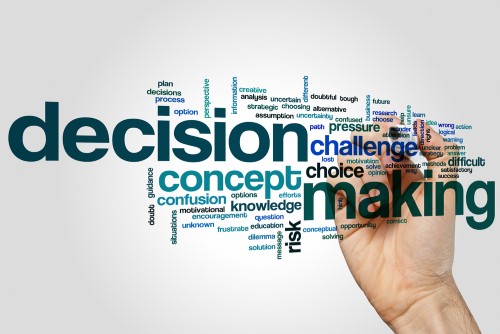The Science Of Decision Making The Reason Intelligent People Make Dumb Decisions

The process of making decisions is the process that we use to evaluate and
decide on alternatives, producing an ultimate decision that may or not lead to
an action. It is fundamentally solving problems. The beliefs of the decision
maker as well as values and information can influence whether it is more or less
so.
Since we are required to make decisions everyday at workplace and in our
private lives it's surprising that smart decision making is not taught in the
classroom. This is a talent that every person should have in their
toolbox.
The neuroscience behind decision making
Researchers have identified several brain structures that are involved in
decision making. These include the anterior cingulate cortex orbitofrontal
cortex and the ventromedial prefrontal cortex. These names are not important.
Furthermore, it's interesting to observe the way they act. The participants in
the study showed various brain activity patterns, based on whether they received
instructions or had to make the decision independently. Our brains react
differently to instruction from other brains when it comes to time for decision
making. Look at here to discover a useful content on random
letter.
Decision making is a complex processand involves several other variables such
as your environment, time-pressure, and your actual and perceived information
that could affect the choices you make. It is important to recognize that you're
not making decisions in a vacuum so that you can make smarter choices.
The three decision-making styles
Although external factors can be difficult to anticipate or control, it is
possible to recognize your own preferences for decision-making and make better
choices. It is important to remember that nobody has a fixed range of cognitive
styles. These styles change depending on the circumstance that is at hand, the
decisions taken, as well as other factors.
Rational vs. intuition
Two different types of cognitive functions are in play during your
decision-making process. The first, System 1, is an intuitive automatic system.
The second (you know what, System 2) is a laborious rational system. System 1 is
speedy and implicit and is top-down. While System 2 is slow and explicit and
top-down. It is possible to learn more in the great book Thinking, Fast and Slow
by psychologist Daniel Kahneman.
Maximizing versus. satisficing
The majority of people fall into two major cognitive styles. Maximisers can
make the best decision while satisficers are able to find the most appropriate
solution. In the end, those who maximize tend to take longer to reach the right
choice, while thinking deeply about the possible outcomes and trade-offs. They
will also tend to regret their choices more often.
Combinatorial vs. positional
Combinatorial styles are characterised by a specific clear, well-defined
material goal. This is the preferred style when the objective is clearly
defined. This style is used when the goal is clear. We use the positional
approach in situations where the goal isn't so clearly defined. We make choices
to take on any potential risks, shield ourselves, and create an environment
where it's less likely to be impacted by negative unanticipated
outcomes.
Being aware of your decision-making styles does not mean that it's easy to shape them, it can aid in using rules and frameworks to make smarter decisions. There are a variety of decision frameworks that I like, but the one I like best is the framework used to make decision-making.
Comments
Post a Comment